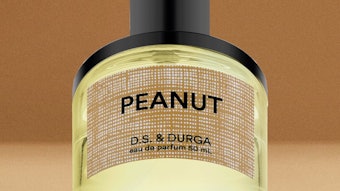A number of factors have long differentiated the preferences of cultures worldwide. There are different tastes in foods and spices, in colors and clothing design, and in scents, too. Climate, raw materials, and the availability and variety of food sources all influence the preferences of local populations.
The ancient civilizations of Egypt, Rome and Greece, used scents abstracted from flowers, woods, resins and spices to perfume their bodies. Modern perfumery originated in Italy and France, and flowery and citrus scents, like scents of the ancient past, were indigenous to their growing regions.
Today, tastes and trends must be considered globally in order to effectively market a product, and understanding regional preferences is a prerequisite. Though the U.S. has had a knack for creating demand for its products and establishing trends, the U.S. fragrance market did not truly begin until after World War II, when many perfumers immigrated to the U.S. This, along with the synthesis of odoriferous materials, changed the world.
I remember my first meeting with Jean Amic in Paris, whose family founded Roure DuPont. He was fascinated with the marketing of Estée Lauder’s fragrances, as well as Revlon’s Charley and, of course, Jovan’s Jovan Musk. The French turned up their noses at the brassiness and strength of these fragrances. They were not subtle or refined, melding to the skin through their infusion of naturals, a quality French fragrances were known for. But what they did have in common with French fragrances was identity and strength. Signature was the name of the game, along with a dynamite marketing strategy.
Marketers have the road map and the creative impetus to drive a new product to success with glamour and imagery. To complement this ability, leading essential oil houses have developed research and manufacturing sites in emerging markets where growth potential is ripe and regional preferences are still a consideration. Many global companies—Unilever, L’Oréal, P&G and Colgate are prime examples—develop formulas in their country of operation and then send them to regional facilities for adjustment to the tastes of that region’s consumers.
In France, the floral notes of jasmine, rose, muguet, sage and lavender will always appeal, but scents finding success capture all the wonderful components of an expanding palette. Perfumers travel to exotic rain forests in Brazil or the mountainsides of India seeking unique scents to capture for their new creations. Exotic spices, herbs and fruits are intertwined with flowery extracts to create the next trend, and new specialty products are emerging as global fragrance players expand their manufacturing to China, India, South America and Russia.
Essential oil houses, too, often produce specialty products specific to a region. Coordinating worldwide formulas has always presented a challenge to provide standards. Often times, the same product will smell or taste differently from one country to another. Some of this difference may be due to certain restrictions of raw materials, but sometimes it is purposefully done to appeal to consumer tastes.
The name of the game with global fragrance oil companies is consumer research, which is why the major players such as IFF, Firmenich, Quest, Symrise and Givaudan have set up research centers to help multinational marketers. IFF recently completed its research on the “five faces of China” to help understand which products suit the various regions of China. Colgate and Givaudan have partnered to apply global expertise to sensory understanding in order to tailor products for success in particular markets. And Firmenich opened an R&D center in Shanghai to explore and discover new ingredients and scents specific to the Asian market.
Research may reveal regional preferences that are seeds for future global trends. India, for example, has a huge market for functional toiletries that deliver fragrance. In Latin America, the use of toiletries is on the rise—particularly in Brazil where O Boticario has a strong presence comparable to Bath & Body Works—and the preferences and options there may be a prime place to explore exportable trends.
Further, as U.S. consumption contracts, more innovations will occur elsewhere, utilizing indigenous talents and materials. With areas of growth potential shifting and as mature markets slow, marketers and fragrance houses must understand, capture and capitalize on the preferences of consumers worldwide.
Nancy C. Hayden is a chemist and pharmacist with more than 30 years in the fragrance industry. She worked as a nose for Jovan from the company’s beginnings and as fragrance director for Jovan Beecham until 1988. Currently, she is a consultant to the fragrance and cosmetic industries.










